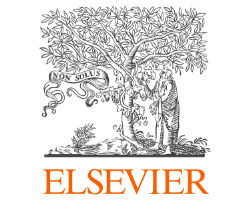Dietry Monitoring System Using Decision Tree to Control Human Obesity
Abstract
Nowadays, obesity is one of the dangerous diseases in the world. Lack of dietary monitoring system will make it difficult for people with obesity to reduce their weight problems. The main objective of this project is to develop a dietary monitoring system that can be used by everybody especially for obesity’s people. The method used in this study is to identify the strength and weaknesses of the existing system which involves reviewing some articles, journals, magazines, and books. The survey was conducted which involves 10 people answering the questionnaire. Respondent answered was used to improve the quality of the system. Next method is utilizing a waterfall model as a method to develop a dietary monitoring system. The system applied the decision tree technique to a classified food calorie. Therefore, the decision tree technique was used in developing this system. The last method used in this study involves the participation of three respondents to evaluate the usability of the system. Respondents need to answer whether they satisfied with the system or they can give suggestions for future improvement. The results of this study show that obesity is a public health issue that is rapidly increasing and must be addressed seriously by developing the system. Significant by developed this system such as helping obesity’s people to diet by giving them the guideline. In conclusion, this system will help people to diet using the decision tree technique for classifying food calories.
Downloads
References
S. Hermawati and G. Lawson, “Managing obesity through mobile phone systems: a state-of-the-art review from a user-centred design perspective,” Personal and Ubiquitous Computing, vol. 18, no. 8, pp. 2003-2023, 2014.
A. M. Rychter, A. Zawada, A. Ratajczak, E. Dobrowolska, I. Krela-Kaźmierczak, “Should patients with obesity be more afraid of COVID-19,” Obesity Reviews, vol. 21, no. 9, pp. 1-8, 2020.
K. Clément, H. Mosbah and C. Poitou, “Rare genetic forms of obesity: From gene to therapy,” Physiology and Behavior, 227 (July), 2020.
X. Lin and H. Li, “Obesity: Epidemiology, Pathophysiology, and Therapeutics,” Front Endocrinol (Lausanne), 2021.
V. Formica, et al, “Obesity and common pathways of cancer and cardiovascular disease,” Endocrine and Metabolic Science, vol. 1, no. 3-4, 2020.
I. H. Sarker, “Machine Learning: Algorithms, Real-World Applications and Research Directions,” Sn Comput. Sci. vol. 2, no. 160, 2021.
C. R. Cox, E. H. Moscardini, A. S. Cohen and R. P. Tucker, “Machine learning for suicidology: A practical review of exploratory and hypothesis-driven approaches,” Clinical Psychology Review, vol. 82, 2020.
T. Nakaura, T. Higaki, K. Awai, O. Ikeda and Y. Yamashita, “A primer for understanding radiology articles about machine learning and deep learning,” Diagnostic and Interventional Imaging, vol. 101, no. 12, pp. 765–770, 2020. P. S.
P. S. Kumar et al, “Advancement from neural networks to deep learning in software effort estimation: Perspective of two decades,” Computer Science Review, vol. 38, 2020.
J. Nayak, K. Vakula, P. Dinesh, B. Naik, and D. Pelusi, “Intelligent food processing: Journey from artificial neural network to deep learning,” Computer Science Review, vol. 38, 2020.
U. Kumari, S. D. Murthy, B. L. Prasanna, and A. K. Panigrahy, “An automated detection of heart arrhythmias using machine learning technique: SVM,” Materials Today: Proceedings, 2020.
C. Wang, J. Du, G. Chen, H. Wang, L. Sun, K. Xu, B. Liu, and Z. He, “QAM classification methods by SVM machine learning for improved optical interconnection,” Optics Communications, vol. 444, pp, 1–8, 2019.
D. Chen, V. Montano, L. Huo, and G. Song, “Depth detection of subsurface voids in concrete-filled steel tubular (CFST) structure using percussion and decision tree,” Measurement: Journal of the International Measurement Confederation, vol. 163, 2020.
E. M. Alvarez-Moya, J. Mirallas, C. Fontanals, M. Quintana, J. Cusidó, J. Rimbau, and M. Garolera, “Development of a Mobile System for People with Obesity,” Journal of Nutrition Education and Behavior, 2020.
S. Harous, M. Menshawy, M. A. Serhani, and A. Aref, “Mobile health architecture for obesity management using sensory and social data,” Informatics in Medicine Unlocked, vol. 10, 2018.

























